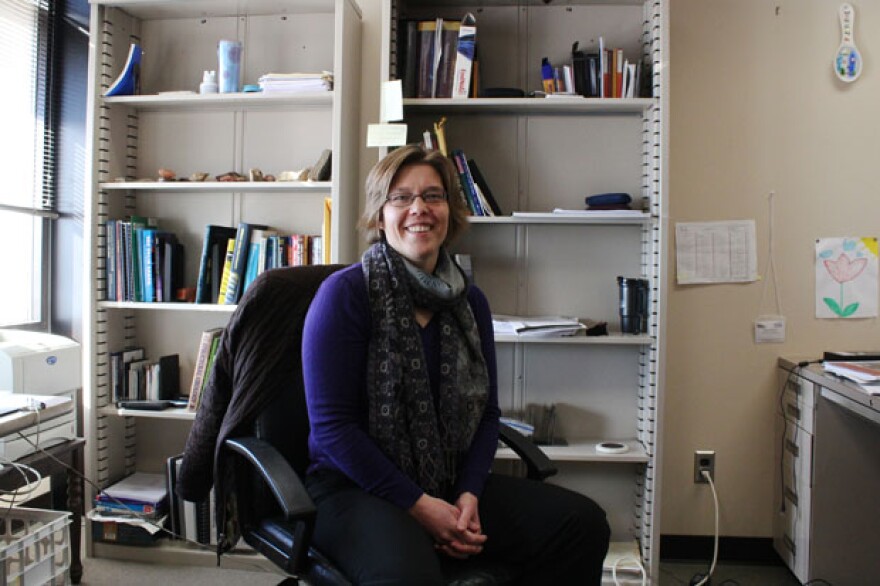A University of Oklahoma seismologist’s research, released today, provides further evidence that Oklahoma’s largest-recorded earthquake was triggered by injection wells used by the oil and gas industry.
Katie Keranen’s findings, in the geoscience journal Geology, adds to a growing chorus of scientific evidence suggesting that injection and disposal wells are likely causing an uptick of earthquakes in the continental United States.
The research centered on a sequence of earthquakes that occurred in November 2011 near Prague, Okla. They included a 5.7-magnitude quake on Nov. 6, the largest quake triggered by injection wells to date, according to the research.
The analysis suggests that injection-induced earthquakes could be larger than previously thought, and that they could occur on much longer timescales.
“This is basically a different class of induced earthquake,” Keranen tells StateImpact.
Katie M. Keranen, Heather M. Savage, Geoffrey A. Abers and Elizabeth S. Cochran / Geology
Click here to read a copy of the research, which was published March 26 by the geosciences journal Geology.
Oklahoma’s November 11, 2011 was the state’s largest recorded with modern instrumentation. Two people were injured in the quake, which destroyed 14 homes, “buckled” pavement and was felt in 17 states, according to the paper.
Keranen’s analysis — co-written with Columbia University’s Heather Savage and Geoffrey Abers, and the U.S. Geological Survey’s Elizabeth Cochran — is based on data collected from more than a dozen seismometers deployed during the November 2011 earthquake sequence and is correlated with data collected by the Oklahoma Corporation Commission, the state’s oil and gas regulator.
Prague is situated near a fault line and an oil field that was heavily used in the 1950s and 1960s. Petroleum production in the area has dwindled since then, but in the early 1990s, operators started installing injection wells in the oil field. Such wells are used to “recover” oil and gas from depleted reservoirs, or to store toxic waste fluid produced during drilling.
Currently, when seismologists evaluate the likelihood that an earthquake was induced by injection wells, they look for earthquakes that occur within months of fluid injection. But Keranen’s research suggests a much longer lag between cause and effect.


